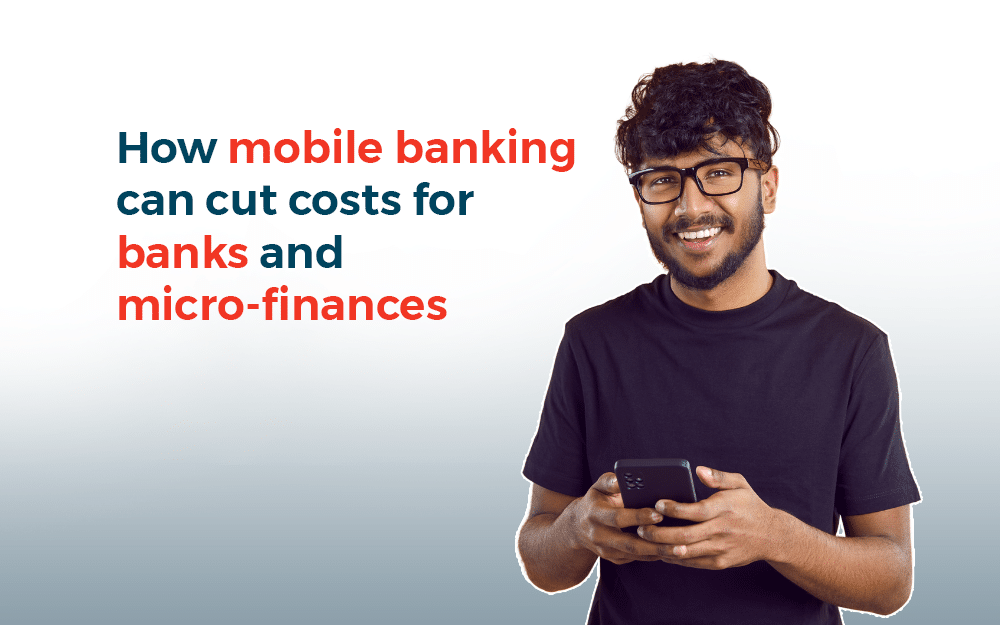In the quickly changing financial landscape of today, mobile banking is emerging as a revolutionary force that is changing how people interact with money all over the world.
The numbers paint a clear picture, from the busy streets of London to the center of New York City: more than 53% of adults in the UK and a sizeable percentage of US banks are aiming for cost reductions of more than 10%. The integration of mobile financial services with traditional banking in the Middle East demonstrates how mobile banking not only improves customer self-service but also streamlines operations. India’s mobile money revolution addresses issues like digital literacy while extending financial inclusion to both urban and rural populations, particularly through services like Unified Payments Interface (UPI).
Partnerships between banks and mobile network operators are opening up more access to financial services even in Africa, where financial inclusion is still a major issue, especially in eastern and southern Africa. Microfinance institutions have partnered with 69% of mobile network operators, 53% of banks, and 43% of third-party agencies in order to increase their reach and impact throughout communities. They are not an exception to this trend, having embraced mobile financial services as an affordable way to do so. Let’s explore the ways that mobile banking can open up new doors for banks and micro-finance organizations in terms of cost savings and operational efficiency.
Operational Efficiency
Modern banking is built on efficiency, and mobile banking is a shining example of this. By seamlessly automating routine tasks, mobile banking transforms traditional banking processes and eliminates the inefficiencies that come with manual interventions. This results in a significant reduction of operational costs. Furthermore, its transformative potential goes beyond simple cost savings. Banks and micro-finances can serve a wider customer base with fewer physical branches by utilizing digital channels to overcome geographical limitations. This tactical change reduces costs associated with rent, utilities, and staffing while simultaneously improving customer accessibility and convenience, strengthening bonds and promoting loyalty.
Reduced Infrastructure Costs
Significant capital expenditures in physical infrastructure are unavoidable in the traditional banking model. Mobile banking, on the other hand, challenges this paradigm by providing a more economical option. The construction and maintenance costs associated with mobile banking are greatly reduced by eliminating the need for physical branches. Financial institutions benefit from this simplified approach’s increased flexibility and scalability in addition to its reduction of operating expenses.
Infrastructure costs are also lowered by the progressive shift away from the use of ATMs and cash handling machines and toward mobile banking services. Mobile banking, in its whole, is essentially a paradigm shift that enables micro-finance and banks to reallocate resources to customer-centric and innovative projects, thereby fostering sustainable growth and competitive advantage.
Customer self-service
Users no longer need to interact face-to-face to perform a wide range of tasks, such as transferring money or checking balances, with just a tap of the screen. In addition to providing customers with greater convenience, this self-service model saves banks and microfinance organizations a substantial amount of money. Staffing requirements are reduced and operational efficiency is increased when there is less reliance on face-to-face interactions. Furthermore, because mobile banking is always available, users can manage their money whenever and wherever they choose, which increases customer engagement and loyalty.
At Redian Software, we stand out as a pioneer in the rapidly changing field of digital finance by providing a cutting-edge mobile banking software solution that completely transforms the banking experience. Our digital banking solution goes beyond conventional limits, giving financial institutions the confidence and agility to navigate the financial landscape of the future. Our solution allows users to execute a variety of financial operations on a single, user-friendly platform by seamlessly integrating third-party transactions.
Our mobile banking software solution is designed to accommodate a wide range of users, offering secure internet banking with multi-factor authentication and strong encryption as well as an inclusive interface that is easy to use for all. More so, our mobile banking solution is prepared to offer unmatched value to anyone in need of quick and secure banking on-the-go, small businesses seeking simplified financial management, or marginalized communities longing for inclusive banking options. Furthermore, by including features like Audit Trials and Records, our solution gives financial institutions the accountability and transparency they require to succeed in the current regulatory environment.
In conclusion, the emergence of mobile banking marks a turning point in the financial sector where cost-effectiveness and innovation combine to completely transform how we handle our money. Mobile banking has many advantages over traditional banking models, ranging from improved customer self-service to operational streamlining. Financial institutions can drive cost savings and promote greater accessibility, inclusivity, and security for all stakeholders by lowering infrastructure costs and empowering customers. By adopting mobile banking, it is not only a strategic necessity as we navigate the digital age, but also a revolutionary path towards a financial ecosystem that is more resilient, efficient, and customer-focused.

